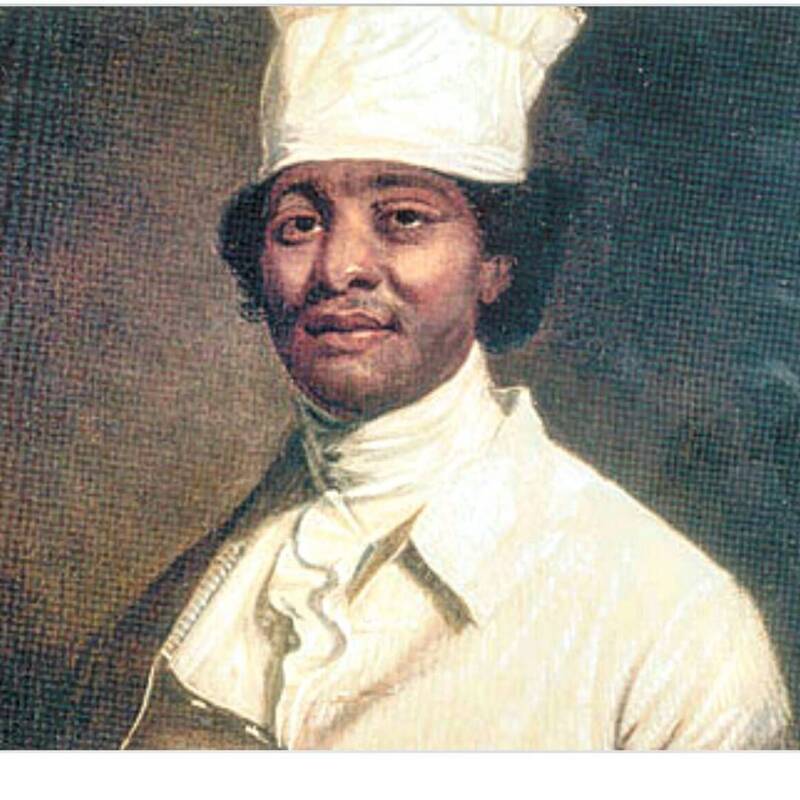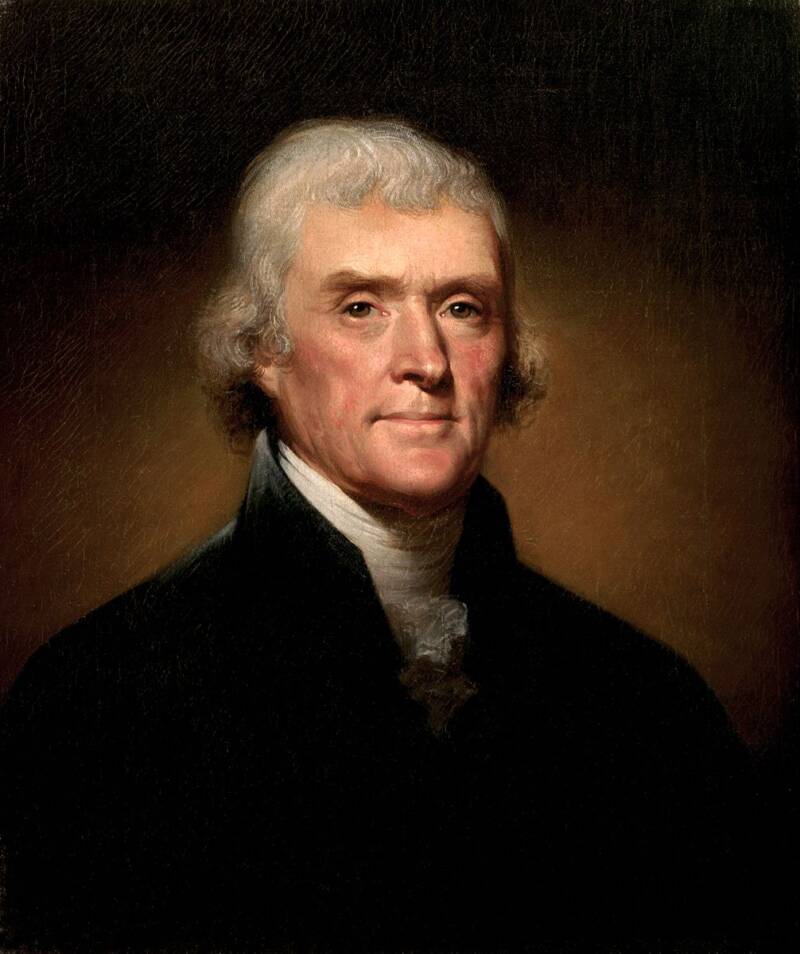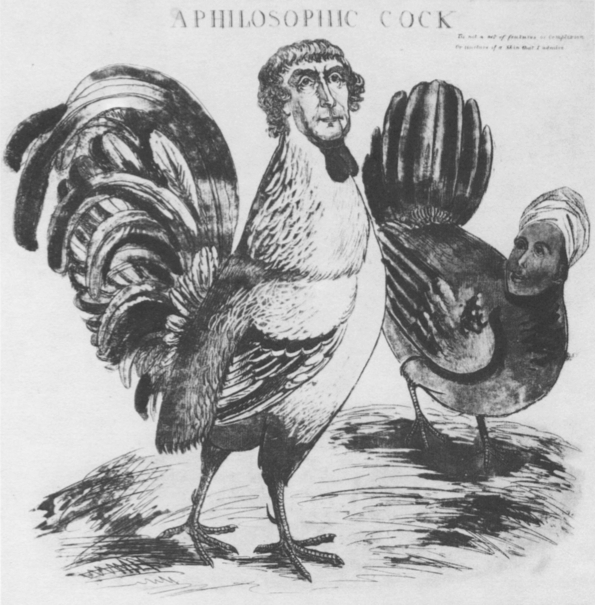James Hemings was the first French-trained chef in America — but he was also enslaved by Thomas Jefferson alongside his sister Sally.
In 1784, Thomas Jefferson set sail for Paris to serve as the American ambassador to the French court. He brought along an enslaved teenager named James Hemings, the brother of Sally Hemings — who would later have children with the Founding Father.
But James trained in the French style of cooking — and was the first American to do so. Jefferson, anticipating his future dinners hosting important diplomats, wanted a French-trained chef without the high cost, and saw his slave as the perfect opportunity.

Jefferson MonticelloJames Hemings was the first American chef to train in Paris.
In fact, Jefferson kept James Hemings enslaved, even when Hemings could have gone free.
Two years into his time in Paris, Jefferson knew that under French law, Hemings was free — but only if the enslaved man claimed it. Writing to a friend worried about his own legally free slaves, Jefferson recommended “saying nothing about it … as the boy is so young that it is not probable he will think of claiming freedom.”
Sally Hemings wasn’t the only member of her family mistreated by Thomas Jefferson. For over a decade, Jefferson kept James Hemings enslaved when the law would have had him set free.
James And Sally Hemings At Monticello

Thomas Jefferson/Wikimedia CommonsA list of Thomas Jefferson’s slaves in 1795.
Born on a Virginia plantation in 1765, James Hemings was the half-brother of Martha Wayles, Thomas Jefferson’s wife. When Martha and Thomas married in 1772, ownership of Hemings, his younger sister Sally, and 133 other slaves passed to the Jeffersons.
At 9 years old, James arrived at Monticello. He quickly drew Jefferson’s attention, and in 1779 the newly elected governor of Virginia brought James to the state capitol. When the British threatened Richmond in 1781, James and his brother were ordered to protect Martha and her children. By then, he was around 15 years old.

Martin Falbisoner/Wikimedia CommonsThomas Jefferson’s Monticello, where James Hemings and his sister Sally grew up after Jefferson married their half-sister.
James Hemings held an unusual position at Monticello. As the half-uncle to Jefferson’s children, he was treated better than the other enslaved people. But he was still a slave. Hemings was allowed to hire himself out to neighboring farms and keep those wages. Yet under the law, he was still treated as property.
America’s First French-Trained Chef
As a teenager, James Hemings impressed Jefferson and his friends as “very careful and assiduous.” Jefferson chose him to accompany him to Paris and study French cookery.
When James Hemings arrived in Paris in 1784, he began an apprenticeship with French restaurateurs and pastry chefs. After three years of training, Hemings took over as the head chef at the American Embassy.
There, Hemings received waves of 24 livres a month, which he kept for himself. But Hemings’s wages were a significant discount for Jefferson — they were only half of what the previous head chef had earned.
What did James Hemings do with his wages? He hired a tutor to teach him French.
Jefferson hadn’t bothered to give his slave lessons. In 1786, he wrote to a friend, “James is well. He has forgot how to speak English, and has not learnt to speak French.”
When the French Revolution broke out in 1789, some revolutionaries argued for the abolition of slavery. James Hemings, now in his mid-20s, knew freedom was within his grasp.
James Hemings, Chef to the Secretary of State

Rembrandt Peale/Wikimedia CommonsThe man who wrote “all men are created equal” owned over 600 slaves over the course of his life.
When Thomas Jefferson returned to the United States in 1789, he traveled with a French-trained chef and his mistress — both of whom were his slaves. Immediately, Jefferson moved to New York and, a few months later, Philadelphia to serve as Secretary of State.
James Hemings stayed with Jefferson, becoming chef to the Secretary of State. He served meals to President George Washington, members of congress, and foreign diplomats.
Legally, James Hemings could have demanded his freedom. Pennsylvania law stated, “If a slave is brought into the State and continues therein for the space of six months, he may claim his freedom.” But Hemings did not.
Several factors may have limited his options. His siblings were all still enslaved by Jefferson. As head chef, Hemings now made $7 a month, a high wage at the time. He may have felt obligated to work for Jefferson to “repay” the cost of his French apprenticeship.
Hemings ultimately negotiated for his freedom. He would return to Monticello to train a new chef and then Jefferson would emancipate him. Jefferson wrote up the agreement which mentioned the “great expense” of training Hemings in “the art of cookery” and Jefferson’s desire to “befriend” his slave.
In 1794, James returned to Monticello. At Jefferson’s request, he began training his younger brother, Peter, to replace him as head chef. It took two years for Jefferson to declare Peter trained and carry out the manumission contract.
Finally, in 1796, more than a decade after he could have demanded his freedom in France, James Hemings became a free man. He left Monticello with $30 and headed north.
The Untimely Death of James Hemings
As a free man, James Hemings traveled to Baltimore and Philadelphia working as a chef. He may have even returned to France for a time.
Then, in 1801, the newly elected President Jefferson tried to hire Hemings to become the White House chef.
But the former slave hesitated. According to an intermediary, Hemings said he was “willing to serve you,” but worried that “he would have to be among strange servants.” James wanted to know “on what conditions and what wages” he would earn.
The reference to “strange servants” might have referred to Jefferson’s slaves. Would agreeing to become the White House chef mean returning to a position of servitude?

James Akin/Wikimedia CommonsNewspapers mocked Jefferson’s relationship with Sally Hemings during Jefferson’s time as president.
James Hemings ultimately did not go to the White House — but he did earn $30 for 6 weeks of work at Monticello in the summer of 1801.
Two months later, at just 36 years old, James Hemings was dead. A rumor reached Jefferson at the White House that Hemings had committed suicide. No one knew how it happened. William Evers wrote to Jefferson that James had been “delirious for some time” and that “drinking too freely was the cause.”
The only records of James Hemings’s death — and most of his life — come from the people who enslaved him. Today, we’re left in the frustrating position of having no images of James and few records about his life that weren’t written by his enslavers.
Did Hemings kill himself? Did the stress of making a living as a former slave while his former master sat in the White House having a secret relationship with his sister contribute to his death? Unfortunately, we will likely never know the full story of James Hemings’s short but impactful life.
James Hemings led a tragic life. So did his sister, Sally Hemings, the slave who gave birth to her slaver’s children. Learn more about Sally Hemings and the dark side of Thomas Jefferson.





